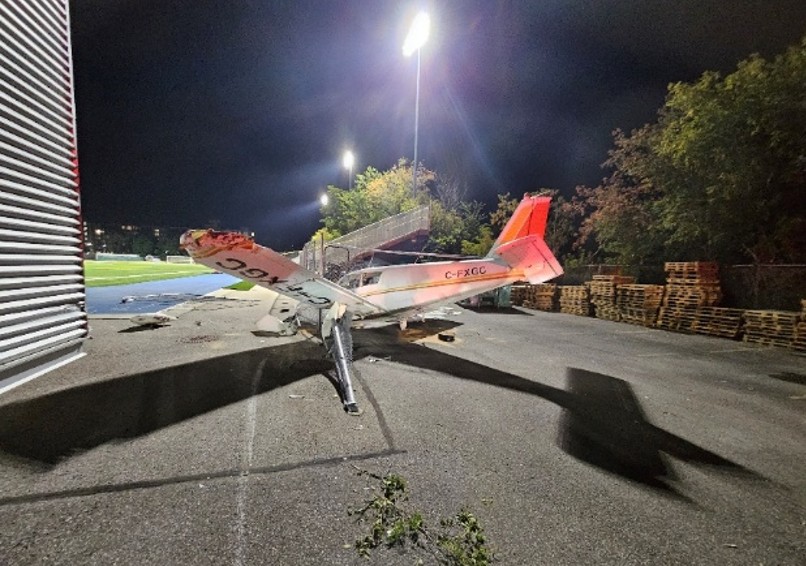Engine failure and forced approach
Privately registered
Piper PA-28-140, C-FXGC
Toronto/Billy Bishop Toronto City Airport (CYTZ), Ontario, 4 NM NE
The occurrence
On 15 September 2025, a privately registered Piper PA-28-140 departed Orillia Rama Regional Aerodrome, Ontario, with a pilot and two passengers on board on a flight to Toronto/Billy Bishop Toronto City Airport, Ontario.
After climbing to 3000 feet, the aircraft began its descent. When the throttle was retarded, the engine stopped producing power. The pilot attempted a restart without success, informed Toronto City Tower of the situation, and elected to conduct a forced landing in an illuminated soccer field. The flight was being conducted during the hours of darkness.
The aircraft struck a chain-link fence before reaching the intended landing area and came to rest nearby. The occupiable space remained intact, and there were no injuries to the occupants. The aircraft sustained substantial damage.
A team of TSB investigators deployed to the site on the day of the occurrence to collect data and assess the accident.
Work completed as of October 2025
Pilot information
The pilot, who rented the aircraft from a local flight club, held a commercial license and was qualified and certified for the flight within existing regulations. He had approximately 590 hours of total flight time and was experienced with light, carburetor-equipped aircraft.
Aircraft information
A post-occurrence examination of the wreckage revealed no mechanical abnormalities that would have precluded normal engine operation. There was sufficient fuel on board, which appeared to be of good quality and uncontaminated. A subsequent ground run of the engine demonstrated normal performance. Examination of the carburetor heat system indicated that it was in the cold position at the time of impact.
Weather information
Meteorological reports for Toronto/Billy Bishop Toronto City Airport at the time of the occurrence indicated a temperature of 18 °C and a dew point of 15 °C. These conditions were conducive to moderate carburetor icing at cruise power, and serious carburetor icing at descent power.
Next steps
This investigation is closed.
Media materials
Deployment notice
Class of investigation
This is a class 5 investigation. Class 5 investigations are limited to collecting data, which are then stored in the modal database. If TSB investigators deployed to the occurrence site, a short description of the occurrence is posted to the TSB website once the investigation has been completed. These investigations are generally completed within 90 days. For more information, see the Policy on Occurrence Classification.
TSB investigation process
There are 3 phases to a TSB investigation
- Field phase: a team of investigators examines the occurrence site and wreckage, interviews witnesses and collects pertinent information.
- Examination and analysis phase: the TSB reviews pertinent records, tests components of the wreckage in the lab, determines the sequence of events and identifies safety deficiencies. When safety deficiencies are suspected or confirmed, the TSB advises the appropriate authority without waiting until publication of the final report.
- Report phase: a confidential draft report is approved by the Board and sent to persons and corporations who are directly concerned by the report. They then have the opportunity to dispute or correct information they believe to be incorrect. The Board considers all representations before approving the final report, which is subsequently released to the public.
For more information, see our Investigation process page.
The TSB is an independent agency that investigates air, marine, pipeline, and rail transportation occurrences. Its sole aim is the advancement of transportation safety. It is not the function of the Board to assign fault or determine civil or criminal liability.
